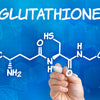From lawn pest to nutritional powerhouse – 3 surprising reasons to eat dandelion greens

Every spring, the bright yellow heads of dandelions pop up in gardens and lawns (much to the irritation of homeowners and landscapers). Scientifically known as Taraxacum officinale, the hardy dandelion is actually a member of the Asteraceae (aster) family – and, as such, is related to sunflowers and daisies.
While many people classify dandelions as “weeds,” natural health experts are quick to point out that they are, in reality, herbs, with major nutritional and medicinal benefits. In fact, dandelion roots, leaves and flowers have been used in folk medicine for centuries to address a variety of diseases. Let’s look at some of the unexpected benefits of dandelion greens.
Protect precious vision with dandelion greens
No two ways about it – dandelion greens are good for your eyes. They are packed with vision-enhancing vitamin A, with a cup of sliced greens offering up a whopping 279.4 micrograms (almost a third of the adult daily allowance). Dandelion greens also contain healthy amounts of two natural plant pigments, or carotenoids, known as lutein and zeaxanthin. These antioxidant compounds are used in many commercial formulas to help protect vision - and have been shown in studies to help prevent an eye disease known as age-related macular degeneration (AMD). According to the American Academy of Family Physicians, AMD is the most common cause of blindness in people over 65.
Incidentally, you can find lutein and zeaxanthin in other bright yellow and orange foods - such as dandelion flowers, pumpkins, squash and corn - as well as in dark leafy greens. (Why don’t dandelion and spinach leaves appear yellow. Because their green chlorophyll disguises the bright coloration. We knew you would ask)!
Dandelions promote heart health
Dandelion greens contain potent antioxidant vitamins - including Vitamin C, vitamin A, vitamin E and vitamin K - that combat the oxidative damage and chronic systemic inflammation that help to trigger heart disease. Generous amounts of potassium in dandelion greens help to regulate blood pressure, while their content of a B vitamin known as folate is believed to prevent strokes. Animal studies have shown that constituents in dandelion greens reduce triglycerides (fats in the blood) and harmful LDL cholesterol – both of which can contribute to heart disease if elevated.
Where dandelions really shine, however, is in their content of vitamin K. A cup of greens yields a whopping 357 percent of the daily recommended amount of vitamin K - which works against atherosclerosis by ushering calcium out of the arteries and maintaining it in the bones. In a new Australian study published last August, researchers noted that people who eat a diet rich in vitamin K have up to a 34 percent lower risk of developing atherosclerosis-related cardiovascular disease! (Conveniently, vitamin K1 - the type found in dandelion greens - just happens to be more effective against atherosclerosis than the vitamin K2 found in animal products).
In other words, consuming dandelion greens is a tasty way to tell your heart, “Thanks buddy - keep up the good work!”
Reduce appetite and support healthy weight
Dandelion greens are an extremely healthy food. According to registered dietitian Nancy Geib, R.N. L.D.N, they are even more nutritionally dense than the green leafy “superfoods” such as kale and spinach.
The US Department of Agriculture reports that one cup of chopped dandelion greens contains a sparse 25 calories and is fat- and cholesterol-free. That same serving packs a not-too-shabby 1.5 grams of protein along with a substantial 2 grams of dietary fiber, which allows dandelion greens to reduce appetite and support healthy weight. Dandelion greens also contain chlorogenic acid - which some researchers believe can help reduce body weight - and have diuretic qualities which can help relieve bloat.
By the way, research suggests that dandelion greens also help protect the liver, lower blood sugar, fight cancer and boost the immune system. Pretty impressive for a weed!
Enjoy dandelion greens raw, boiled, steamed or sauteed
Fresh, raw dandelion leaves make a great addition to mixed green salads. Play up their zesty taste with other peppery-tasting greens - such as arugula and watercress - or balance the flavors with mellow Bibb or butter lettuce. You can even toss in dandelion flowers for a pop of color!
Cooked dandelion greens can also be served as a side dish. To reduce bitterness, soak them in salted water for 10 to 15 minutes, then boil for no more than 5 minutes. Garnish with olive oil, balsamic vinegar, lemon, onions or Parmesan cheese.
Dandelion greens are commonly available at health food stores and vegetable markets. In spring, you may even be able to gather your own from a local lawn or meadow. (Tip: For maximum taste, bypass the older, tougher leaves in favor of younger, more tender greens). Make sure you harvest your greens from an area free of pesticides - and one that neighborhood pets haven’t used as a restroom. If you have any doubt that what you are harvesting is indeed dandelion greens, consult your county extension office for identification.
Dandelions are a potent herb that may interact with prescription medications, so check with your integrative doctor before consuming them. Of course, don’t eat dandelions if you are allergic. According to natural health experts, a sensitivity to ragweed or chamomile makes an allergic reaction to dandelions more likely.
While dandelion greens are something of an acquired taste, you just might find yourself suddenly craving their unique, zesty, slightly bitter flavor. So, go ahead and indulge – your body will thank you.
Sources for this article include:






